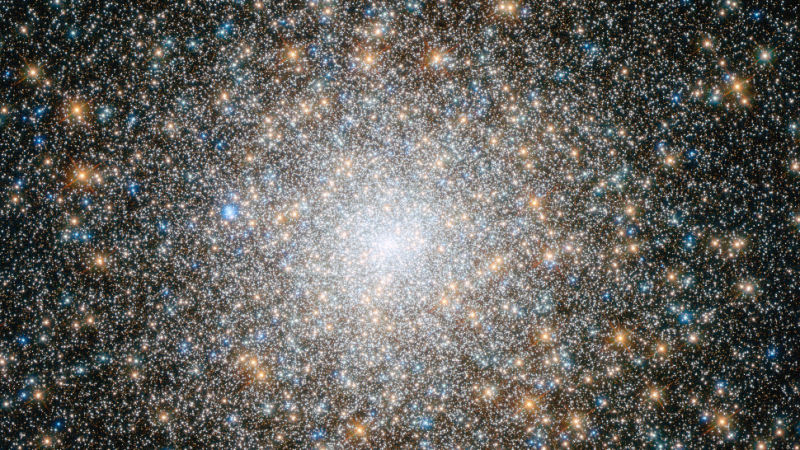An ideal place to look for spacefaring civilizations may be within bunches of stars called globular clusters, a study claims—because they’re tightly packed with old stars. The idea is that the stars are within communicating distance of each other, and old enough to host planets that have evolved advanced life forms.
An ideal place to look for spacefaring civilizations may be within bunches of stars called globular clusters, a study claims—because they’re tightly packed with old stars.
The idea is that the stars are within communicating distance of each other, and old enough to host planets that have evolved advanced life forms.
“A globular cluster might be the first place in which intelligent life is identified in our galaxy,” said Rosanne Di Stefano of the Harvard-Smithsonian Center for Astrophysics, lead author of a report on the findings.
She presented the work Jan. 6 at a press conference at a meeting of the American Astronomical Society in Kissimmee, Fla.
Our Milky Way galaxy hosts about 150 globular clusters, most of them orbiting in the galactic outskirts, Di Stefano said. They formed about 10 billion years ago on average.
One problem: being very old, these stars are poor in the heavier elements, like iron and silicon, needed to make planets. This is because it takes earlier-generation stars to form these elements. But in the case of the clusters, there are no earlier generations of stars—the existing stars are the first generation.
Some scientists have argued that this makes globular cluster stars less likely to host planets. In fact, only one planet has been found in a globular cluster to date.
But Di Stefano and her colleague Alak Ray of the Tata Institute of Fundamental Research in Mumbai argue say it’s premature to count out globular cluster planets. Planets have been identified around stars only one-tenth as heavy-element-rich as our Sun. And smaller planets, like Earth, seem no show no preference for turning up near heavy-element-rich stars.
Another concern is that a globular cluster’s crowded environment would threaten any planets that do form. A neighboring star could wander too close and gravitationally disrupt a planetary system, flinging worlds into icy interstellar space.
However, the authors counter that a star’s habitable zone—the distance at which a planet would be warm enough for liquid water—varies depending on the star. Smaller stars tend to have smaller habitable zones, they argue, so planets floating there would be close enough to the parent star to be relatively safe from stellar interactions.
“Once planets form, they can survive for long periods of time, even longer than the current age of the universe,” said Di Stefano.
So if habitable planets can form in globular clusters and survive for billions of years, what are the consequences for life should it evolve? Life would have ample time to become increasingly complex, and even potentially develop intelligence.
Such a civilization would enjoy a very different environment than our own. The nearest star to our solar system is four light-years, or 24 trillion miles, away. In contrast, the nearest star within a globular cluster could be a mere trillion miles away. This would make interstellar communication and exploration easier, with signals taking perhaps only a couple of months to travel.
“Sending a broadcast between the stars wouldn’t take any longer than a letter from the U.S. to Europe in the 18th century,” said Di Stefano.
“Interstellar travel would take less time too. The Voyager probes are 100 billion miles from Earth, or one-tenth as far as it would take to reach the closest star if we lived in a globular cluster. That means sending an interstellar probe is something a civilization at our technological level could do in a globular cluster,” she adds.
The closest globular cluster to Earth is still several thousand light-years away, making it hard to find planets, particularly in a cluster’s crowded core. But it could be possible to detect transiting planets on the outskirts of globular clusters, Di Stefano and Ray said. Astronomers might even spot free-floating planets through gravitational lensing, in which the planet’s gravity magnifies light from a background star.
A more intriguing idea might be to target globular clusters by looking for radio or laser broadcasts. The concept has a long history: In 1974 astronomer Frank Drake used the Arecibo radio telescope to broadcast the first deliberate message from Earth to outer space. It was directed at the globular cluster Messier 13.










